Deconstructing Harry: Discontinuous Editing as a Narrative Tool
Examining discontinuous editing as a narrative tool in Woody Allen's Deconstructing Harry
“All people know the same truth. Our lives consist of how we chose to distort it.” - Harry Block
Although film scholars tend to focus mainly on Woody Allen’s early body of work, especially films like Annie Hall, many of his later works can teach us an impressive amount about the subtle craft of creating a film. Deconstructing Harry, made twenty years after Annie Hall, can teach us about the power of discontinuous editing to further a narrative.
Continuous Editing
Normally, film editors are taught to attempt to conceal continuity shifts between cuts as part of the “Continuity System”, which is present in most Hollywood films. It relies on the parity of certain elements between shots to allow the suspension of disbelief in the unreality of the two-dimensional images (or, in the case of 3D films, three-dimensional popup book approximations) with which we are presented. Through careful matching of motions, observations of editing rules like the 180 and 30 degree rules, and other techniques, we can be given a series of shots which feel as if they are part of a single continuous entity.
The Role of Discontinuous Editing
Purposefully bucking continuity-based editing isn’t a step to be taken lightly. It is often perceived as a lack of editing skill or attention to detail ; the only reason why Deconstructing Harry is able to use it with the degree of success which it does is because it is very obviously intentional and planned.
Deconstructing Harry
The first shots of Deconstructing Harry, interspersed between Allen’s signature white-on-black title cards, show us a woman getting out of a cab.

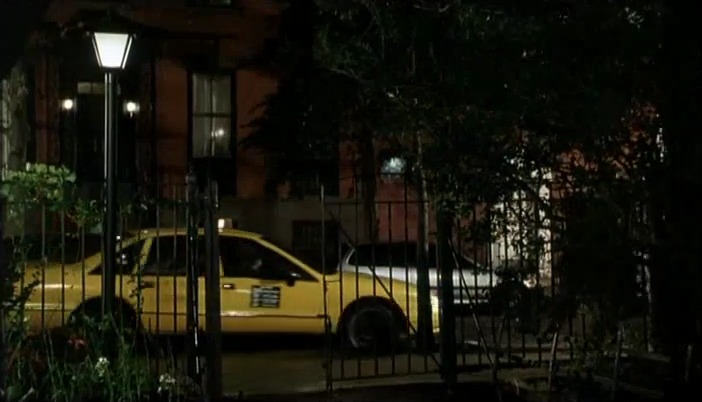
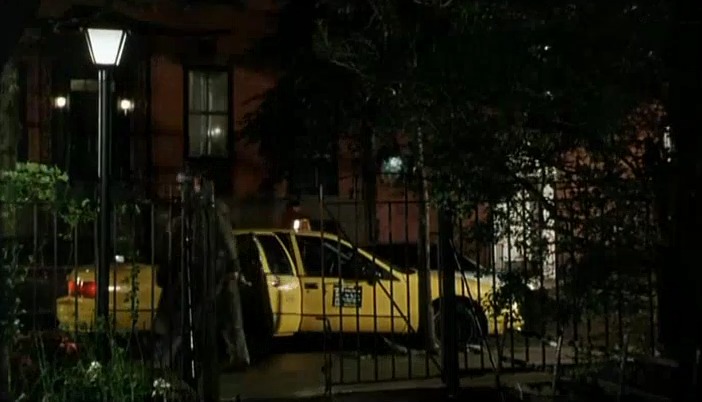
She reaches the gate, then we jump cut back to her getting out of the car.
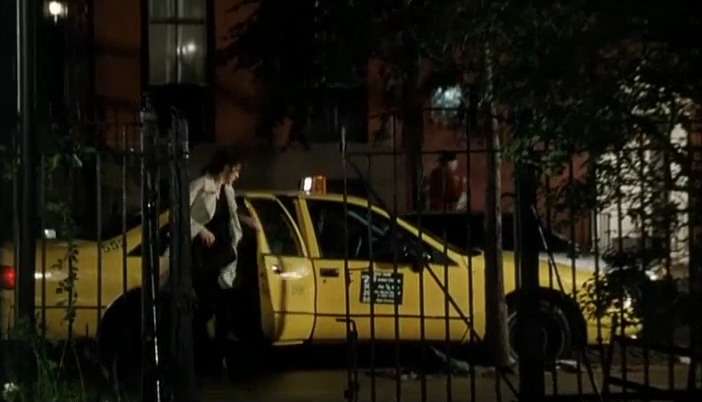
This transition is jarring, and it causes us to immediately pay attention to it. There’s something unnatural about the way this epistemic universe is unfolding. As Eisenstein noted, the juxtaposition of images – their context – changes their meaning.

The sequence resets itself again.
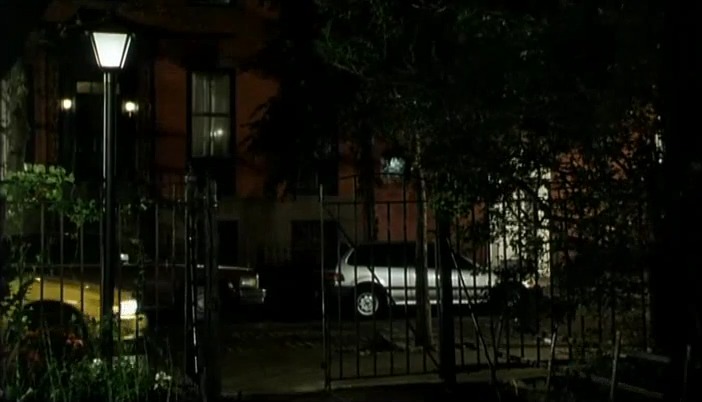
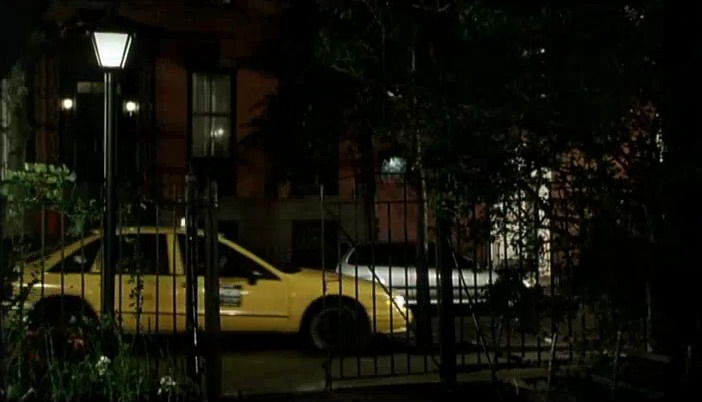
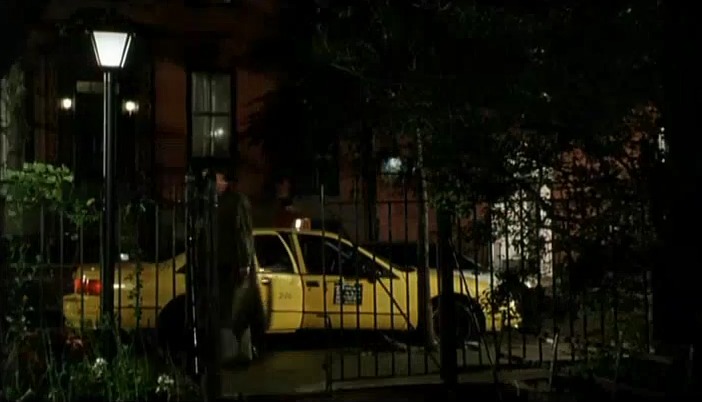
And again. These images aren’t the same each time, either.
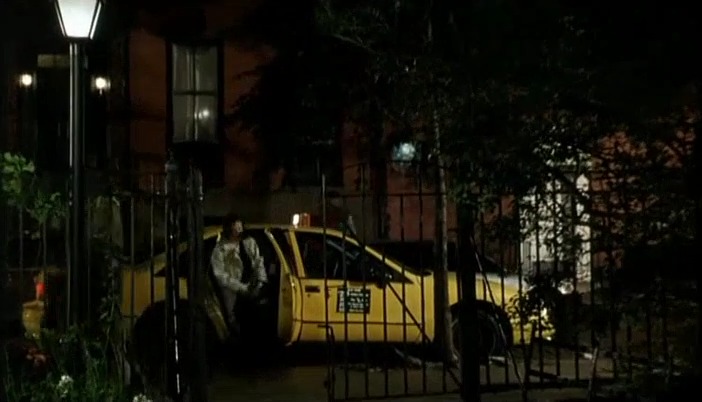
There are a number of sequences in film where shots are repeated, yet retain subtle differences. One notable example is the coffee cup drop from The Usual Suspects, where Singer shows three distinctly different takes of the coffee cup shattering from different angles – the sequence (which could be considered a miniature story told within the larger context of the film) mirrors the main film arc about the way that perspectives, which may or not be honest, represent the objective truth of the film universe.
Allen is setting us up for something; we just don’t know what.
A few minutes later, Harry is grabbing some wine as his very upset ex-wife is yelling at him about a book he has just published, lampooning and exploiting her life.
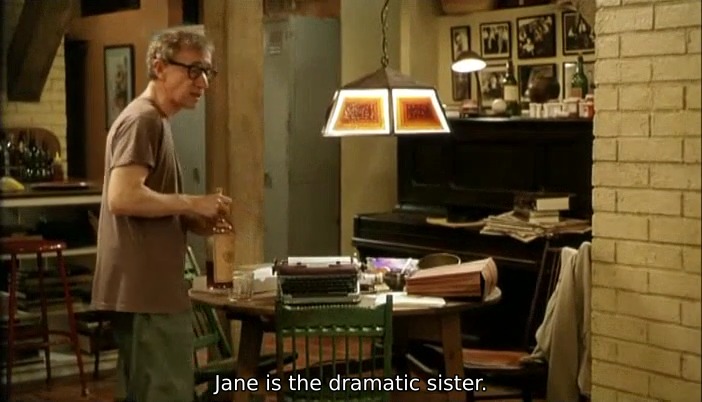
She walks into the frame …
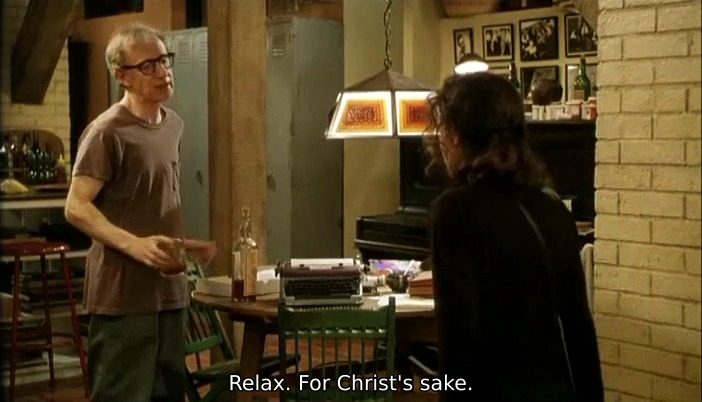
… and suddenly jumps to the other side of the frame, traveling the opposite direction.
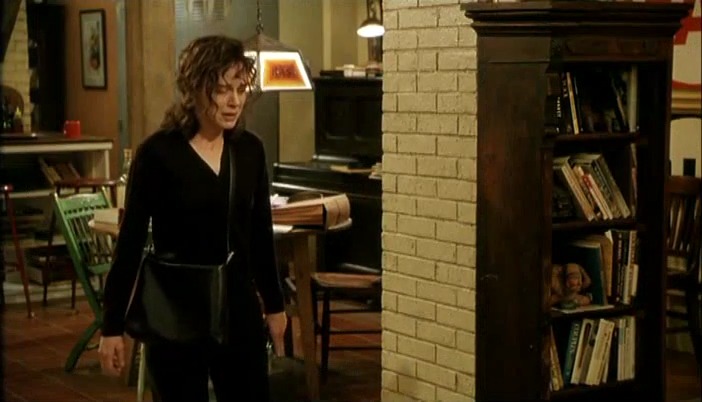
Not to fear, it’s just a setup.
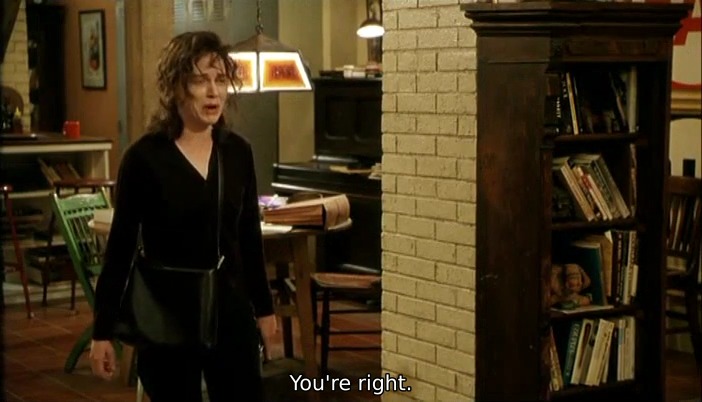
She’s getting the nerve to pull a gun on Harry, right after she lets him know that he’s right about her.
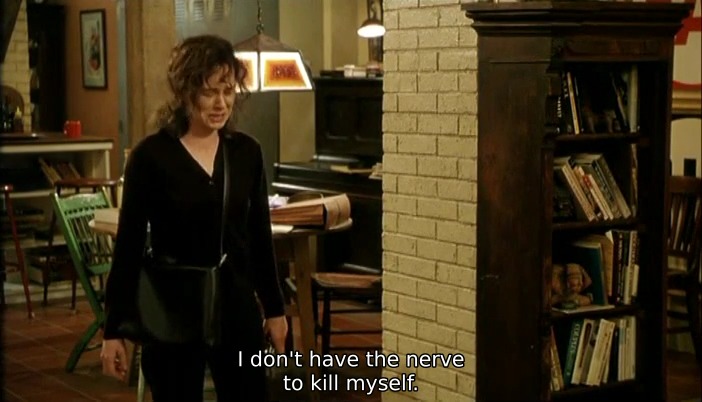
A few moments later, Harry is up on the roof, running away from his wildly-firing ex-wife.
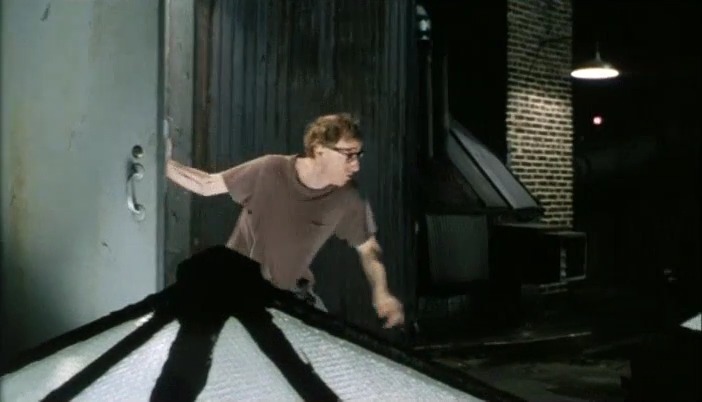
Allen paints himself into a corner – literally – as he is pushed into a slightly obfuscated enclosed space. We can see the gun, but not Janet. The importance to Harry is the threat, not his ex-wife.
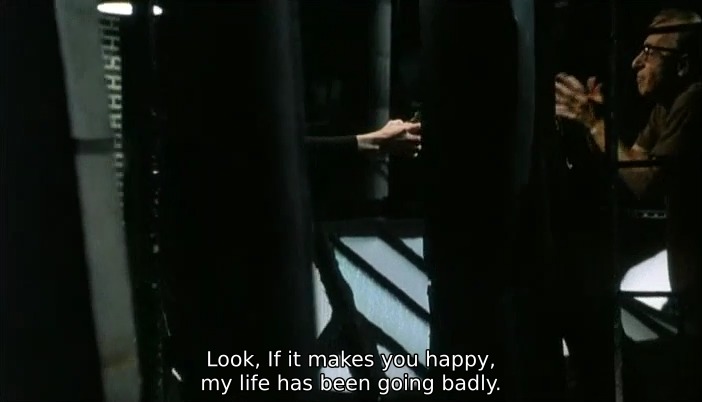
Janet is now visible, crazed and manic, in the other negative space between the rooftop structure. She has forced the conversation to be about her. Harry can still be seen, but he’s still painted into a corner.
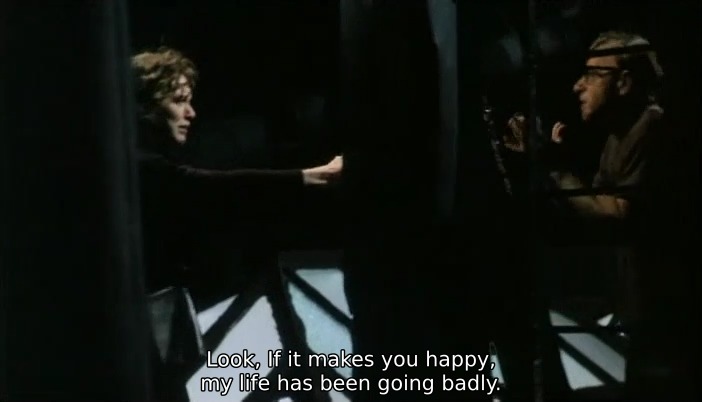
Harry is vulnerable and exposed…
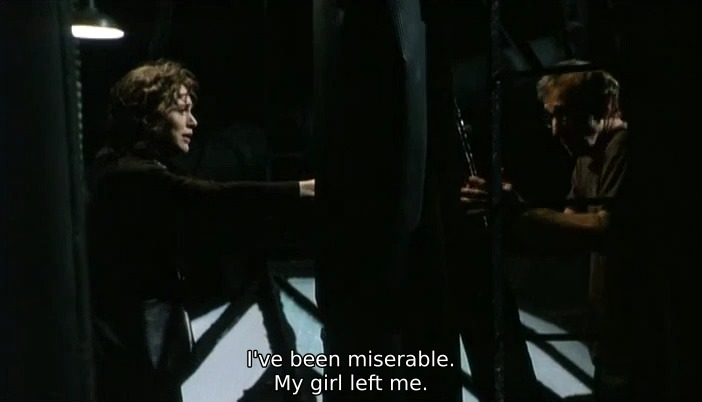
Suddenly, we cut to a different angle, and a different point of the conversation. Harry is almost dead center frame, and his ex-wife’s face isn’t visible, but we can still see the gun. Much like a witness’ account of a crime, the perpetrator is less important than the threat itself.

Now back to the original sequence of events, objects obscuring Janet.
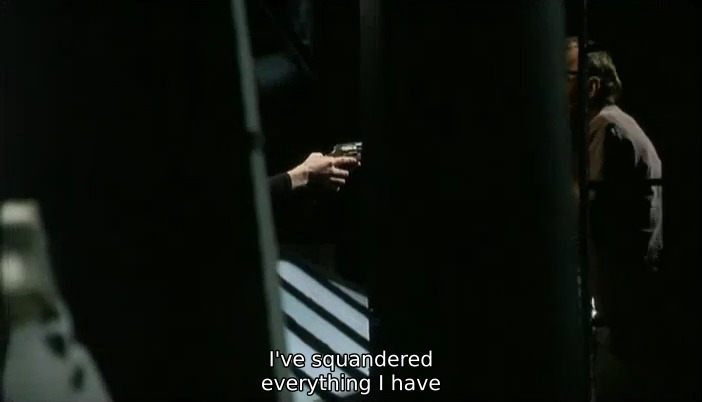
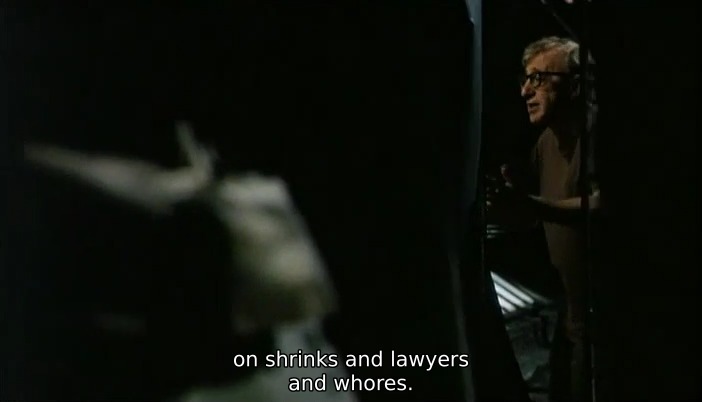
Then suddenly we return to the second sequence.
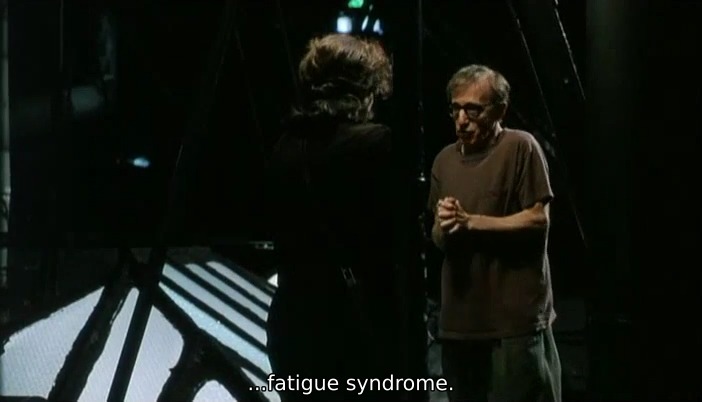
Allen’s discontinuous editing sequence is, much like the dropping of the coffee cup in The Usual Suspects, a representation of a larger theme. We may not be immediately cognizant of it, but Harry’s inability to see what’s real – his fragmented sense of reality – is being externalized in a narrative sense by using the editor’s frame of reference.
Harry Block has a very weak grasp on the difference between reality and fiction – somewhat ironically, as he has made a career of adapting reality into fiction. Whereas this could be externalized by a voiceover or dialogue with another character, it is far more subtle and sublime to allow the concept to be absorbed at a far more subconscious level. It provides a jarring sense of uneasiness, and a window into the shattered reality which Harry Block inhabits.
(All images are presented under fair use guidelines – all frame grabs are property of Sweetland Films, Jean Doumanian Productions, Fine Line Features, or any other entities who hold copyright on this film. They are presented for exclusively educational purposes.)